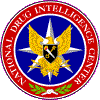
Michigan High Intensity Drug Trafficking Area Drug Market Analysis
June 2007
Strategic Drug Threat Developments
- Methamphetamine production in the Michigan HIDTA region has
declined significantly as a result of successful law enforcement initiatives,
public awareness campaigns, and state-level precursor control legislation.
Methamphetamine laboratory incidents1
in Michigan HIDTA counties decreased 44 percent from 2005 to 2006.
- Clandestinely produced fentanyl, often mixed with and sold
as heroin, has emerged as a serious drug threat in the Detroit area. At least
212 fentanyl-related overdose deaths have occurred in the Detroit area since
August 2005. Some abusers knowingly abuse fentanyl, while others unwittingly
use it under the impression that it is heroin. The large numbers of overdoses
and deaths have been a deterrent to some abusers; however, the higher potency
of heroin/fentanyl combinations appeals to some heroin abusers in the area
who seek a more intense euphoric effect.
- Heroin use is increasing throughout Michigan, particularly
among young female Caucasian abusers. Some abusers of prescription narcotics
such as OxyContin substitute heroin when they have difficulty obtaining pharmaceuticals.
- Chaldean2 criminal groups in the HIDTA region are increasingly distributing MDMA, powder cocaine, crack cocaine, and marijuana. They also engage in fraud and money laundering activities. Metropolitan Detroit is home to the largest Chaldean population outside Iraq, and this population is expected to grow as additional Iraqi refugees enter the United States and relocate to the Detroit area.
HIDTA Overview
The Michigan HIDTA comprises five counties in eastern Michigan (Genesee, Macomb, Oakland, Washtenaw, and Wayne) and four counties in western Michigan (Allegan, Kalamazoo, Kent, and Van Buren). (See Figure 1.) Detroit, Flint, Grand Rapids, and Kalamazoo are the primary drug markets in the region; they serve as regional distribution centers for many smaller drug markets within the HIDTA region as well as markets in the midwestern and northeastern United States.
Detroit, the largest and most influential drug market in Michigan, is connected to Canada by the Ambassador Bridge and the Detroit-Windsor Tunnel. (See Figure 2.) The Ambassador Bridge is the world's busiest commercial border crossing. Illicit drugs, particularly high-potency Canadian marijuana and MDMA (3,4-methylenedioxymethamphetamine, also known as ecstasy), are transported to Detroit from Canada; in return cocaine and bulk currency derived from U.S. drug sales are smuggled back into Canada. Despite Detroit's proximity to Canada and an international border, most of the cocaine and commercial-grade marijuana available in metropolitan area originates in locations at or near the U.S.-Mexico border. Heroin is transported to the area from New York City, Chicago, southern California, and Florida. Detroit is a regional distribution center for cocaine, marijuana, heroin, and MDMA, supplying markets throughout Michigan and several other states, including Georgia, Kentucky, Ohio, Pennsylvania, and West Virginia.
Figure 2. International border between Detroit, Michigan, and Windsor, Ontario.
Flint's location approximately 70 miles north of Detroit facilitates drug trafficking and gang activity within the area. Drug distributors in Flint are typically supplied by traffickers in Detroit; however, some local distributors have contacts in Chicago and Southwest Border states from whom they directly purchase wholesale quantities of drugs.
|
Drug Trafficking Organizations, Criminal Groups, and Gangs Drug trafficking organizations are complex organizations with highly defined command-and-control structures that produce, transport, and/or distribute large quantities of one or more illicit drugs. Criminal groups operating in the United States are numerous and range from small to moderately sized, loosely knit groups that distribute one or more drugs at the retail and midlevels. Gangs are defined by the National Alliance of Gang Investigators' Associations as groups or associations of three or more persons with a common identifying sign, symbol, or name, the members of which individually or collectively engage in criminal activity that creates an atmosphere of fear and intimidation. |
Grand Rapids and Kalamazoo are located in southwestern Michigan, midway between Detroit and Chicago. Most of the illicit drugs available in the Kalamazoo-Grand Rapids area are transported from Chicago and, to a lesser extent, Detroit and the Southwest Border area. Local drug production, particularly methamphetamine production, also occurs but has declined significantly as a result of recent pseudoephedrine sales restrictions, law enforcement initiatives, and public awareness campaigns. Local college students contribute to drug availability and abuse by obtaining illicit drugs, primarily MDMA and pharmaceuticals, in their hometowns and bringing them back to the Kalamazoo-Grand Rapids area for limited distribution and personal use.
End Notes
1. Methamphetamine
laboratory incidents include seizures of laboratories, dumpsites, and chemicals
and equipment.
2. Chaldeans are ethnically
Iraqi individuals who practice the Catholic religion.
